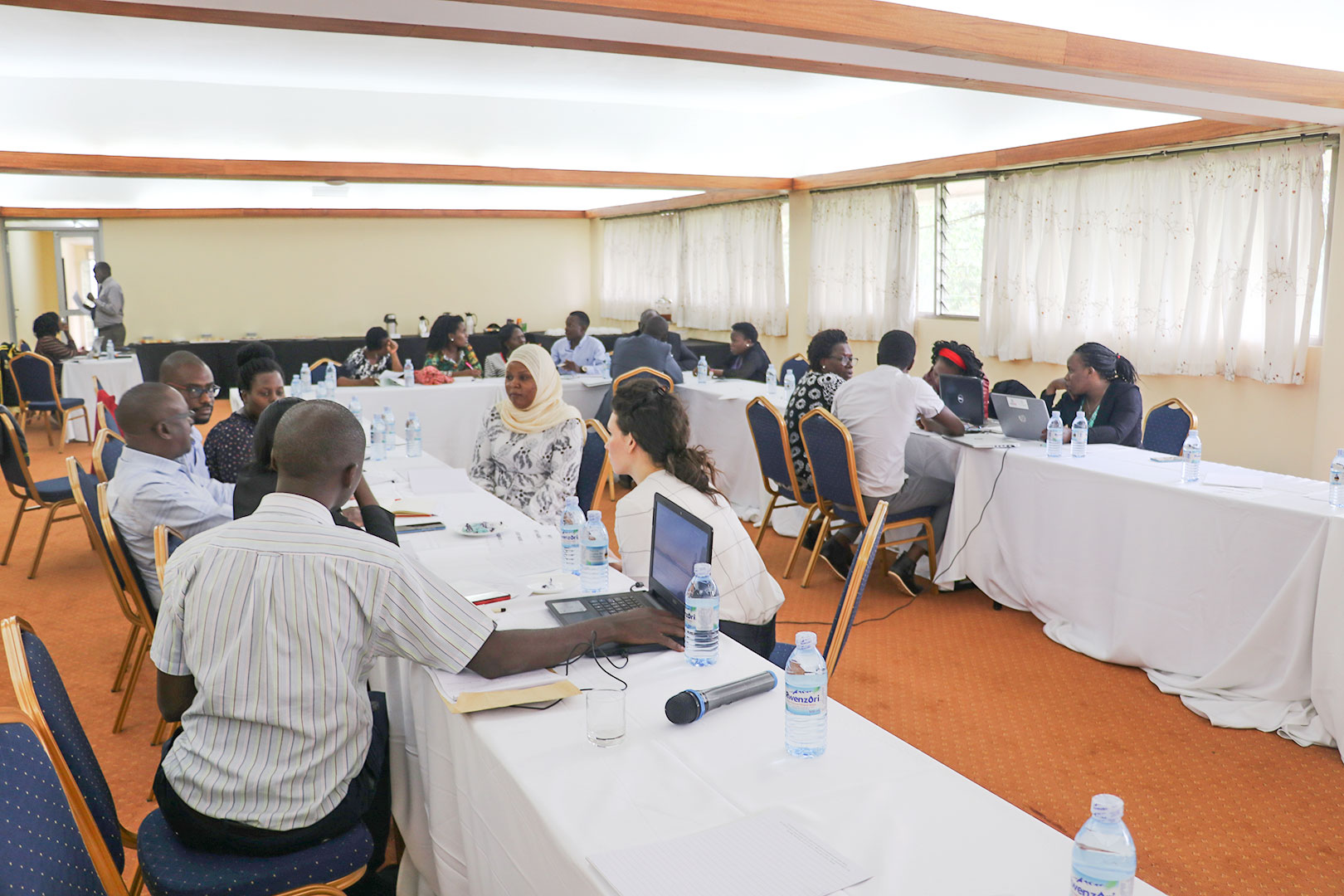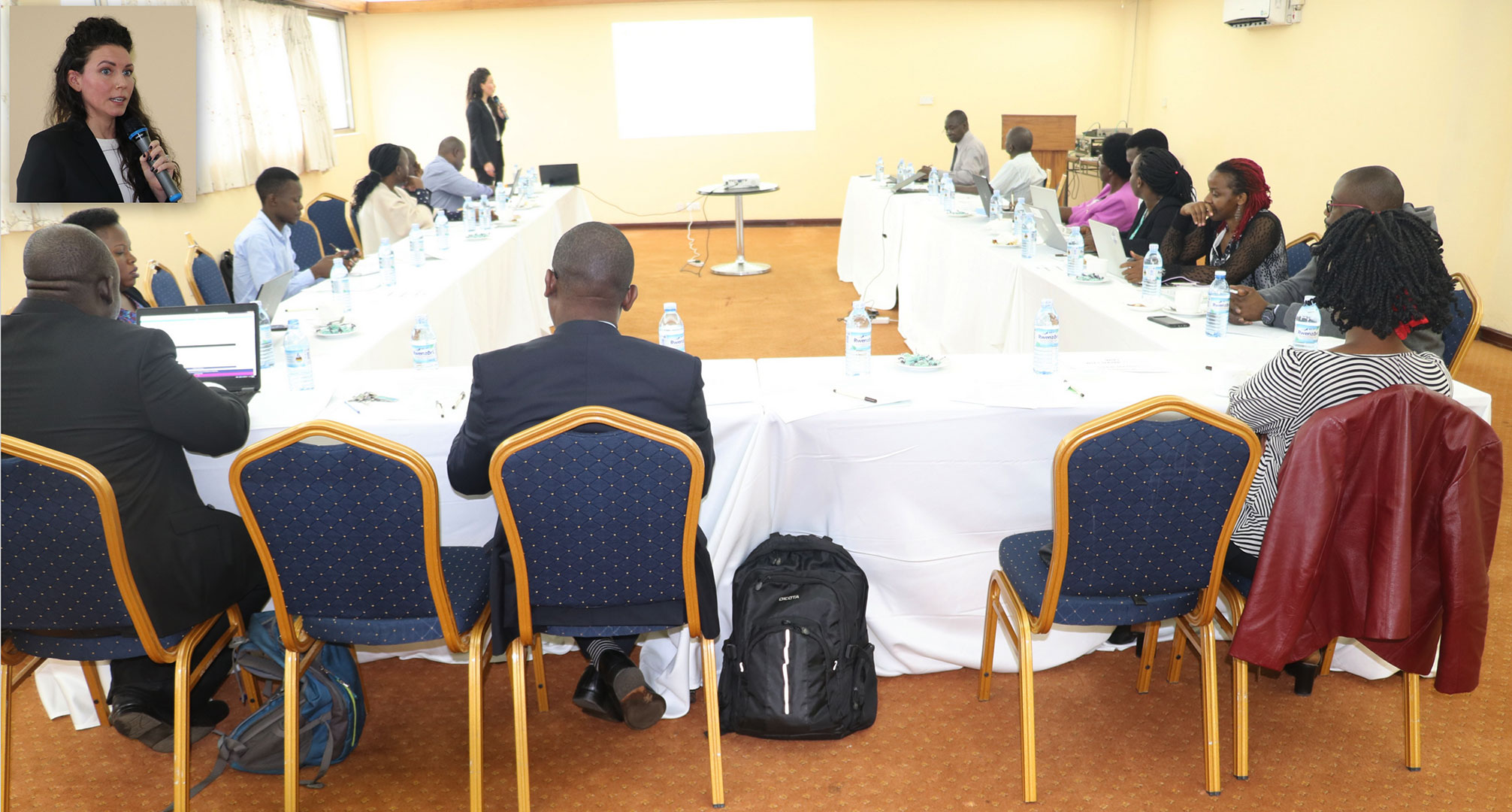
Participants at the workshop discuss challenges to stunting reduction in Uganda in focus groups.
Makerere University School of Public Health (MakSPH) in partnership with SickKids’ Centre for Global Child Health, has today Tuesday 28th January 2020, held an inception meeting at Golf Course Hotel, Kampala, for a study exploring the underlying factors driving stunting and wasting in children under 5, in Uganda. The consultative workshop drew stakeholders from the ministry of health (MoH), Uganda Bureau of Statistics (UBOS), the Office of the Prime Minister (OPM), and academia from Makerere University School of Food Technology, Nutrition and Bio – Engineering (MakSFTNB) and Kyambogo University.
Speaking at the function, Dr George Upenytho, Commissioner Community Health at the ministry of health, revealed that most of the children in Uganda did not have what to eat. Citing Uganda Demographic Health Surveys, Dr Upenytho commended the efforts Uganda had made to reduce stunting. He however, stressed that efforts to curb the nutrition deficiencies were being addressed by embedding nutrition into various policies across different sectors.
The principal nutritionist in the ministry of health, Ms Samalie Namusoke said that poorly – nourished mothers gave birth to stunted children, adding that the central region was still “doing badly”, adding that maternal age was also a factor associated with stunting. On a positive note, she revealed that Uganda’s stunting and under – weight rates had reduced among children 29 – 45 months, in the period 1995 – 2016. Ms Namusoke mentioned Vitamin A supplements, De – worming, water, sanitation and hygiene (WASH) interventions and prolonged breastfeeding as recommendations towards mitigating stunting.
Dr Emily Keats, a Senior Researcher Associate at the Centre for Global Child Health, Toronto, said that data/research on stunting in Uganda was very limited. She added that nonetheless, those studies showed that revealed a negative association between higher wealth levels and stunting. Dr Keats further revealed other factors which contributed to stunting and wasting, including: inadequate breastfeeding, food insecurity, and higher maternal age. Additionally, she disclosed that males were more disadvantaged than their female counterparts.
Dr Peter Waiswa, an associate professor in the Department of Health Planning and Policy Management at MakSPH, stressed warned that the current stunting rate of 28.9% (UDHS 2016) if not reduced, would reduce the country’s Gross Domestic Product (GDP) by 15%. He also noted that Uganda’s biggest obstacle to improvement was at the implementation stage, and not lack of strategies. A case of “will” and not “way”.
Dr Richard Kajura, a Research Associate at MakSPH and the project’s Principal Investigator (PI), emphasized that stunting had no global patterns, and could be found anywhere. However, he observed that “Africa has a general stunting challenge that should be addressed”.
About the Stunting Study
The study, “Assessing the Determinants of Childhood Stunting Reduction in Uganda”, will be undertaken by MakSPH and Centre for Global Child Health at the Hospital for Sick Children (SickKids), Canada. Dr Richard Kajura is the Principal Investigator (PI) in Uganda, while Dr Emily Keats will lead the Canadian team. This investigation will seek to explore the determinants driving reduction of stunting in under – 5 children; national studies have pointed to being born in a lower - income household, lower maternal education, rural residence, and male gender; subnational studies have indicated water contamination, histories of fever, lack of latrines, failure to deworm children and distance from a health unit, among others, as the drivers of stunting.
The study will employ a standardized, rigorous methodological process, applied in 2 phases.
Phase A will explore literature and create a“Data Gap Map”; phase B will involve conducting additional quantitative, qualitative and policy/program analyses.
Written by Joseph Odoi



